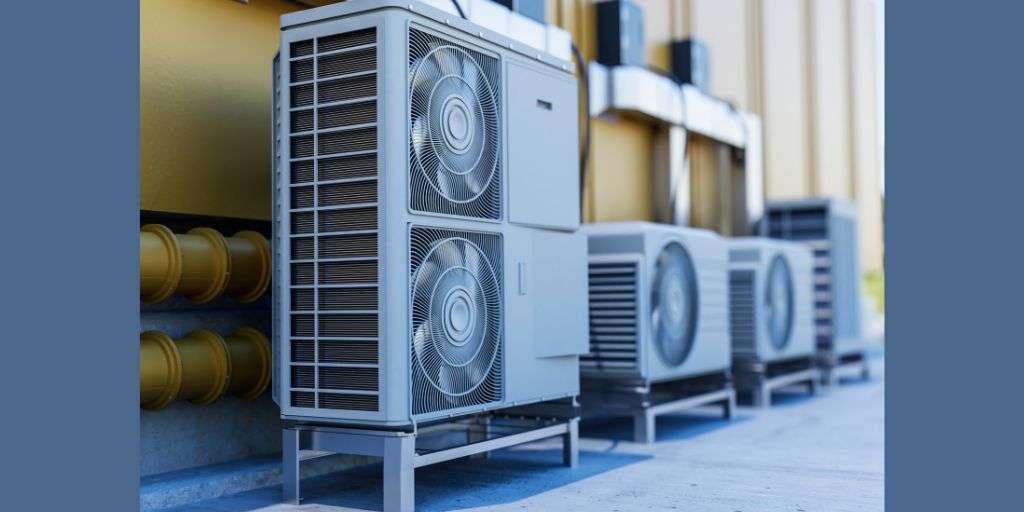
With energy efficiency and sustainability taking center stage, cold climate heat pumps (CCHPs) are becoming the go-to technology for heating homes and businesses. Conventional heating appliances like gas furnaces or electric heaters are expensive and less effective when temperatures reach extremes.
Compared to other systems, however, CCHPs – or cold climate heat pumps – are made to work exceptionally well even at sub-zero temperatures, which makes them a must-have in colder parts of the world. This article will discuss how CCHPs operate, their challenges, and why they are the best solution for heating in cold weather regions.
How Do Cold Climate Heat Pumps Work?
As previously stated, heat pumps service space by collecting heat from the outside air and moving it to the inside. Heat pumps have difficulty extracting heat from outside air during winter because it is usually shallow. But, CCHPs utilize inverter technology, better refrigerants and compressors, and efficiently function at temperatures as low as -25 degrees Celsius (-13 Fahrenheit).
CCHPs do not generate any heat, which makes them even more efficient than conventional heating systems. CCHPs only transfer heat, making them up to three times more energy efficient. Companies like Greenworks AC prioritize offering innovative products that assist in conserving energy and protecting the environment, thus guaranteeing optimum performance at colder temperatures. CCHPs ensure that consumers remain comfortably warm while spending less money on energy. Watch this video explaining how cold climate heat pumps work for further detail.
Common Challenges with Heat Pumps
CCHPs have their perks, but they also come with their challenges. Here are the major issues connected to heat pumps:
1. Efficiency Drop in Extremely Cold Weather
Conventional heat pumps have diminishing returns in efficiency with significantly lower temperatures, which need additional heating sources.
2. Heat Pump Not Working in Cold Weather
Icing of the Outdoor Unit: Ice accumulation on the heat pump’s outdoor unit may prevent it from functioning.
Defrost Cycle Failures – If the defrost cycle is allowed to fail, the ice build-up will cause the system to shut down completely.
Inadequate Heating Capacity: Some heat pumps do not generate sufficient heat during very low temperatures.
Heat Pump Problems and Solutions
CCHPs have challenges, but most issues can be solved by proper maintenance and installation. Outlined below are the problems and solutions:
1. Poor Performance in Freezing Conditions
Solution: Implement a dual fuel system that complements a CCHP with a gas or electric heater for very low temperatures.
2. Short Cycling or Frequent Shutdowns
Solution: The heat pump and regularly scheduled maintenance must be correctly sized for the space.
3. Ice Accumulation on Outdoor Unit
Resolution: Ensure the unit is not obstructed and confirm that the defrost method operates as desired. Greenworks AC has custom models explicitly built for deep winter to operate without interruptions.
Best Heating System for Cold Climates
Energy effectiveness, pricing, and dependability are just a few of the main variables that come into focus when picking a heating system for extreme cold conditions. Gas furnace units have always been the primary solution. These days, modern CCHPs outperform furnaces regarding energy efficiency and environmental impact. Greenworks AC, one of the leaders in Energy-efficient HVAC solutions, creates advanced CCHPs optimized for extreme weather conditions with minimal cost of operation.
Unlike high-priced electric resistance heaters, which consume a lot of electric energy, CCHPunits provide a cost-effective option for long-term heating requirements. CCHPs can be combined with solar energy systems, cutting the carbon footprint and energy costs even more.
How to Find the Best Cold Climate Heat Pump
Some critical indicators need to be taken into consideration when picking the right CCHP:
HSPF: The rating of the heating seasonal performance factor is high. The degree of CCHP effective heating output in colder conditions is directly proportional to the HSPF rating.
Inverter Technology: This feature allows the heat pump to generate consistent temperature levels inside by slowing down or speeding up the unit.
Defrost Capabilities: A reliable defrost cycle. This feature ensures that ice of any kind that builds up does not affect performance.
Energy Star Certification: Ensures the unit has passed testing to qualify for high unit efficiency.
Many national brands produce high-quality CCHPs. However, GreenWorks AC differentiates itself with its unique designs, energy-efficient innovations, and green initiatives. All products are designed and built to provide optimal heating comfort in extreme conditions economically and efficiently.
Conclusion
Outdated home heating systems are being phased out with the invention of cold-climate heat pumps. They provide a more economical and energy-efficient way of keeping a home warm, making these pumps an eco-friendly solution. Challenges such as dual fuel systems, inappropriate sizing, and lack of maintenance can hinder efficiency, but solutions are always available.
The market is going towards sustainable solutions, so businesses such as Greenworks AC are leading the industry by creating advanced models of CCHPs that can endure extreme winters while lowering energy expenditure. Buying a high-quality cold climate heat pump is not just an intelligent investment but the most practical choice for efficient heating in a home.
Start from Greenworks AC products if you need to replace your heating system.
